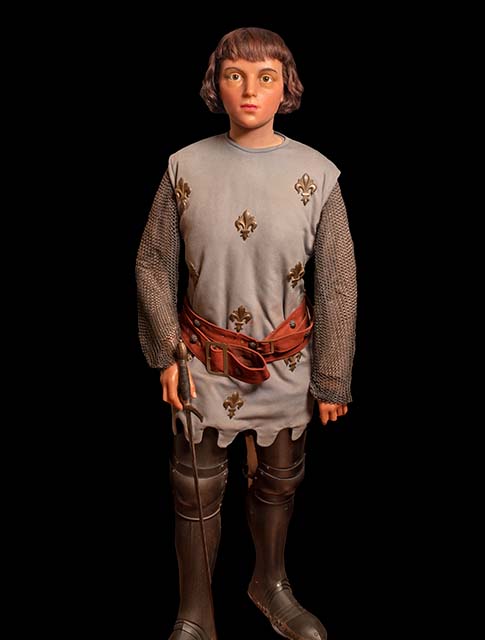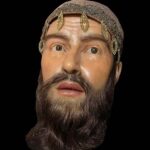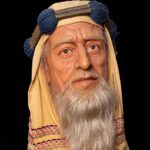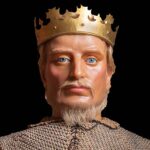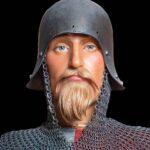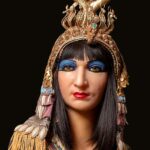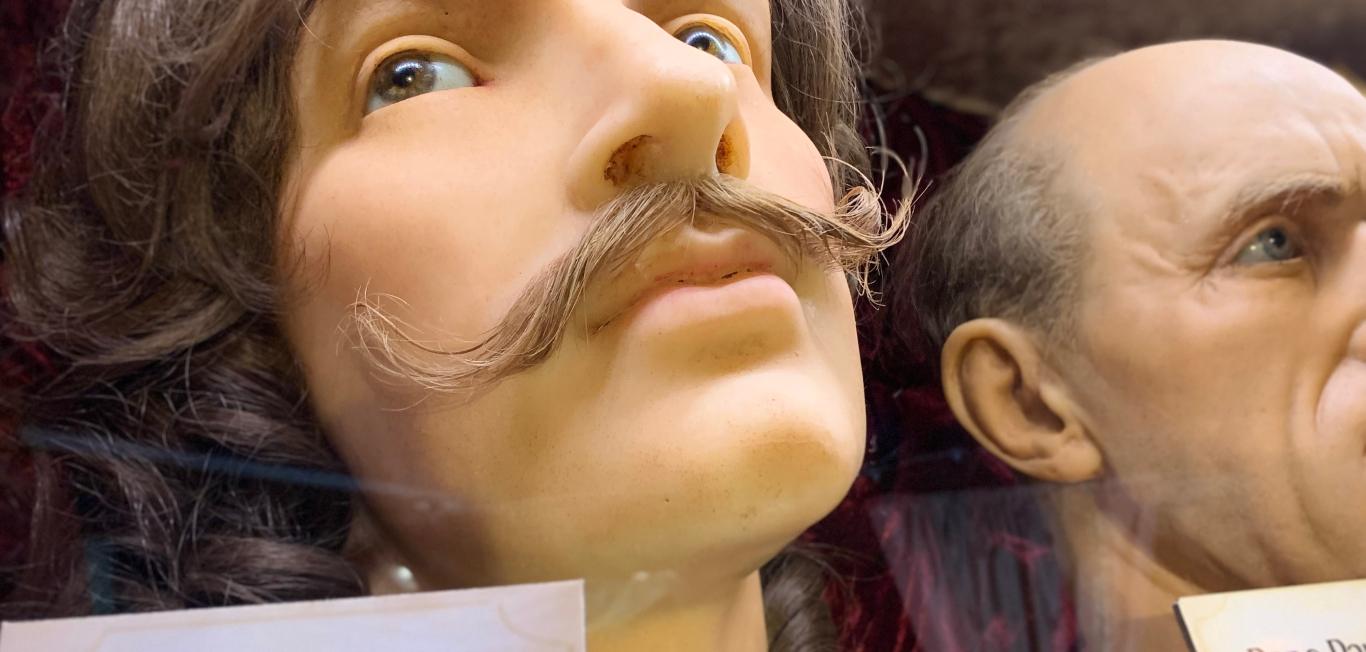Who is
Joan of Arc?
According to Joan of Arc’s history, she was a French military leader who was recognized for her work during the Hundred Years’ War. She played an important role in the Siege of Orléans and urged that Charles VII of France be crowned. She is revered as a hero in France, and it is said that she operated under spiritual direction. She was a brave woman who went against what all of society was telling her. By dressing as a man and fighting in battles through what she believed was the will of God, Joan of Arc’s history ended up having a major impact on France and the English army. Although her ending was unfortunate, she was later proclaimed a saint and is recognized in the church as St. Joan of Arc. Keep reading for the full biography of Joan of Arc.
DID YOU KNOW?
Joan of Arc was proclaimed a saint and is recognized in the church as St. Joan of Arc.
Facts About Joan of Arc
-
Joan of Arc was actually not poor, contrary to what some accounts say. She was born to a farmer who owned 50 acres in Domrémy in the Vosges department of France in the year 1412. According to Joan of Arc’s history, she had the nickname “the maid of Orléans,” although her real name is truly a mystery.
-
Her real name is a mystery. The English name “Joan of Arc” is a translation of the French “Jeanne d’Arc;” nevertheless, that was not Joan of Arc’s last name. To be clear, her family did not originate from any area known as “Arc,” and no such hamlet actually exists. Given that apostrophes were not commonly used in the fifteenth century, it is probable that she went as “Jehanne D’arc” or “Jehanne Tarc” in honor of her father.
-
When Joan of Arc entered the war with her visions, she effectively turned a territorial war into a religious war, convinced by the divine nature of her mission. Joan of Arc would assume the role of commanding the French forces after the French army suffered a devastating fight and failure against the English at Agincourt. Seven months would pass during the English attempt to capture Orléans during the blockade. One of Joan of Arc’s most well-known miracles is said to have occurred here. It is thought that as she and her army were attempting to reach Orléans, the wind and water currents abruptly changed, allowing them to go there covertly.
-
She succeeded at the Siege of Orléans, establishing her legend.
-
She had the King crowned in Reims. The French King Charles VII would be able to go to Reims and be crowned there thanks to her triumph at the Siege of Orléans and a number of subsequent successes. His crowning provided him a great deal of legitimacy because Reims was historically the location of French kings’ coronations. The English King Henry VI’s later crowning in 1431 at Notre-Dame de Paris was not the same.
-
According to a legend, Joan of Arc was accompanied by bagpipers who played “Hey Tuttie Tatie,” which was allegedly also performed for Robert the Bruce as he approached the Battle of Bannockburn.
-
Joan of Arc was taken prisoner by a party of French lords from Burgundy who were supporting the English on May 23, 1430, in Compiègne, France. They imprisoned Joan of Arc for months in Rouen Castle’s dungeon, also called the Tour Jeanne d’Arc.
-
She was sentenced to death and burnt at the stake on May 30, 1431 in Rouen. Joan of Arc was around 19 years old at the time. After she passed away, her body was burned again to prevent the collecting of relics by being converted to ashes. The neighboring Seine River was then used to discharge her remains. Twenty-two years after her passing, the Hundred Years’ War would still be raging, with Charles VII of France exploiting Joan of Arc’s inspiration and sense of justice for his cause.
-
To commemorate the location of her heresy-related burning at the stake in Rouen, a subdued statue of her has been erected beside the “Église Sainte-Jeanne-d’Arc.”
-
She was declared a martyr and canonized as a saint by the Catholic Church. Pope Callixtus III’s court reviewed the case in 1456 and found the defendant to be innocent as well as a martyr. She wasn’t, however, declared a saint by the Roman Catholic Church until 1920.
-
She inspired the bob haircut. The bob cut was created in 1909 by a hairstylist named Antoni Cierplikowski, a Polish man whose alias was Monsieur Antoine de Paris. Joan of Arc inspired him. He was a Paris-based hairstylist, and his services were in very high demand in the city. The bob cut was therefore created.
Early Life
The early biography of Joan of Arc begins in 1412, when she is believed to have been born. When she was young, Joan accompanied her father in the fields, spun wool, cleaned the house and took care of their livestock. Joan of Arc received her religious education from her mother. While the Duchy of Bar was surrounded by territory that supported the Burgundian cause and had an ambiguous feudal status, it contained a large portion of Domrémy. Affected by the war around 1419, Domrémy was assaulted and had cattle taken in 1425. Villagers began to believe that, in order to obtain peace, the English needed to be driven out of France as a result of this. After this attack, Joan experienced her first vision.
Later, Joan testified that she saw Saint Michael accompanied by angels in the garden when she was 13, somewhere around 1425. She claimed that after seeing this vision, she sobbed because she wished they would take her along. She frequently saw St. Michael, the region’s patron saint who is revered as a defender of France, throughout her life. She claimed that she experienced similar visions, frequently having them in response to church bells ringing. She saw St. Margaret and St. Catherine as well. Both were revered as virgin saints who battled formidable foes, suffered torture and martyrdom for their faith and upheld their virtue till the end. Joan claimed that she made a virginity promise to these spirits throughout her testimony. A young man from her village claimed that Joan had broken a marriage commitment, but Joan insisted that she had made no such promises, and the ecclesiastical court rejected his claim.
DID YOU KNOW?
She frequently saw St. Michael, the region's patron saint who is revered as a defender of France.
A rumor that was going about the French countryside when Joan was young, based on visions of Marie Robine of Avignon, said that an armed virgin would appear to defend France. She requested the assistance of her uncle to travel to the adjacent town of Vaucouleurs in May 1428, where she petitioned Robert de Baudricourt, the commander, for an armed escort to the Armagnac court at Chinon. She was abruptly rejected and sent home by Baudricourt.
Major Milestones
When Burgundian forces stormed Domrémy in July, the town caught fire, the crops were devastated and Joan, her family and the other villagers were forced to evacuate. In January 1429, she left Vaucouleurs once more. Once more, she was denied; however, now she had two of Baudricourt’s men on her side. Charles II, Duke of Lorraine, who had learned of Joan during her sojourn at Vaucouleurs, called her to Nancy. The duke believed she might have healing capabilities because he was sick. She chastised him for living with his mistress and did not give any remedies.
The English invasion of France was continued by Henry V’s brothers, John of Lancaster, First Duke of Bedford, and Humphrey, Duke of Gloucester. Anglo-Burgundian rule extended to the majority of northern France, Paris and portions of southwestern France. Charles had not yet been crowned, and since the Burgundians held Reims, the location of French kings’ traditional coronations, doing it there would assist in bolstering his claim to the throne. The English had begun to encircle Orléans in July 1428 and had nearly cut it off from the rest of Charles’ domain by seizing many of the minor bridge towns on the Loire River. As the final defense against an invasion on the rest of Charles’s domain, Orléans played a strategic role. In her subsequent story, Joan claimed that this was the time when her visions instructed her to leave Domrémy and aid the Dauphin Charles.
Around this period, the English took an Armagnac relief convoy at the Battle of the Herrings during the Siege of Orléans, and Baudricourt consented to another meeting with Joan. Through their discussions and the encouragement of Metz and Poulengy, Baudricourt was persuaded to grant her permission to travel to Chinon so she could meet the Dauphin. Six men served as Joan’s protection during her journey. Joan changed into men’s clothing before leaving, which was given to her by her companions and the residents of Vaucouleurs. She lived the rest of her life wearing men’s clothing.
DID YOU KNOW?
Joan lived the rest of her life wearing men's clothing.
Late in Life
The French hero Joan of Arc was executed at the stake for heresy on May 30, 1431, in Rouen, Normandy, which was under English rule at the time. The 19-year-old was not only proclaimed immortal, but she also became a national symbol for the French for her work during the protracted Hundred Years’ War.
Believed to have been preaching heresy, Joan was placed on trial. She was charged with blasphemy for dressing in men’s clothing, acting on demonic visions and unwilling to surrender her words and concede to the church because she believed that only God should judge her. By having her verdict handed down by an evangelical court, Joan’s captors attempted to suppress parts of her trial, although the proceedings were politically driven. It was suggested that Joan’s triumph was proof that she was a servant of God since she testified that her visions had told her to conquer the English and crown Charles. There was no doubt about the outcome. Charles’ claims to validity could have been undermined by Joan’s guilt by demonstrating that he had been consecrated via the actions of a heretic. Cauchon presided over the trial as the regular judge. The experiment was funded by the English. Instead of being held captive by the English and guarded by male troops under the Duke of Bedford’s command, Joan was supposed to be in the care of the church throughout the trial and under the care of women. Under inquisitorial rules, Joan was subjected to protracted questioning without a lawyer. The trial records may have been fabricated, according to evidence.
In the trial, Joan displayed excellent restraint. Torture devices were displayed to Joan in an effort to get her to surrender. Cauchon met with roughly a dozen assessors (clerical jurors) to discuss whether or not she should be tortured after she refused to be intimidated. The majority made a decision not to. A document of abjuration was later given to her, in which she agreed not to wear men’s clothes or carry weapons. She heard it read out loud and signed it.
An unrepentant or relapsing heretic may have been handed over to the judgment of the secular courts and offered the option of receiving the death penalty for public heresy, which constituted a capital offense. Joan was no longer an unrepentant heretic after signing the abjuration, but she could still be put to death if found guilty of returning to her old ways. At the rehabilitation trial, witnesses said that guards had forced Joan to wear men’s clothing while also subjecting her to maltreatment and rape attempts, including one by an English aristocrat. Cauchon was informed that Joan had started dressing like a man again. He dispatched priests to urge her to maintain her subjection, but the English forbade them from going to see her. Joan was put to death on May 30, 1431, when she was around 19 years old. Despite court procedure mandating that heretics be barred from receiving the sacraments, she was permitted to do so in the morning. She was subsequently brought to Rouen’s Vieux-Marché (Old Marketplace), where her sentence of conviction was delivered aloud. She was handed over to the English and bound to a large plastered pillar for death by burning though she should have been handed over to the proper authority, the bailiff of Rouen, for a secular sentence. She requested a cross to be placed next to her chest as she passed away and was given one by an English soldier made out of a stick. A procession crucifix was brought from Saint-Saveur’s Church. It was held in front of her eyes while she was being executed, and she clutched it before her hands were chained. Her remains were dumped into the Seine River when she passed away.
FAQs
What was Joan of Arc famous for?
Joan of Arc is known as a hero in France. She disguised herself as a boy in order to fight battles in the French army, in which they were victorious, making the French believe God was with them.
Why was Joan of Arc burned at the stake?
Joan of Arc was burned at the stake for heresy and dressing like a man.
What are some accomplishments of Joan Of Arc?
Joan of Arc assisted Charles of France in retaking his French territories and thwarting the English by acting on divine visions she had witnessed. Following a strong performance during the Siege of France, Joan of Arc was later taken prisoner by Burgundian soldiers that supported the English. France did not try to gain her release while she was being held captive. During the Orléans siege, Joan was the hero.
How did Joan of Arc receive the nickname ‘The Maid Of Orléans’?
La Pucelle was the name Joan of Arc gave herself; after her passing, it was changed to La Pucelle d’Orléans. Young girls were known as “pucelle,” which was a term for virgins and young, unmarried ladies. The Joan of Arc appellation was expanded to include the town of Orléans, since it was here that she led the French army to one of its most illustrious triumphs against the English army, commemorating the Siege of Orléans.
Why did the Anglo-Burgundians accuse Joan of witchcraft?
Joan of Arc would hear voices that would lead her to perform miracles, making the Anglo-Burgundians view her as powerful.
